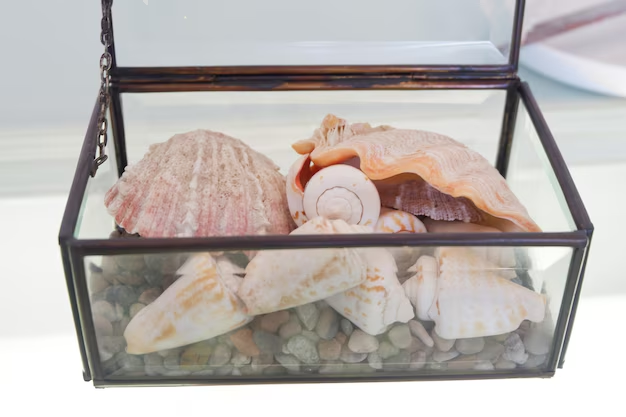How Long Can You Safely Store Clams in the Refrigerator for Maximum Freshness?
Have you ever returned home with a bag of fresh clams after a successful day at the market, only to ponder how long they will last in the refrigerator? Fret not! Understanding how to store clams properly can ensure they remain fresh and safe for consumption, allowing you to enjoy their delicious taste without worry. Whether you're planning a seafood feast or storing leftovers from a recent gathering, this comprehensive guide will provide all the details you need. Dive in to discover the best practices for keeping clams fresh, as well as some related storage tips for other seafood delicacies.
🕒 Understanding Clam Shelf Life
Clams in Their Natural State
Fresh, live clams are a cherished delicacy for many seafood lovers. However, they have a limited shelf life, which requires careful handling to ensure that they remain both flavorful and safe to eat. Ideally, clams should be consumed as soon as possible after purchase. When stored correctly, they can last for about 2 to 4 days in the refrigerator.
Tips for Maximizing Freshness:
- Purchase Timing: Buy clams on the day you plan to use them to maximize freshness.
- Inspection: Before storing, ensure all clams are alive (shells should be closed or close promptly when tapped).
🧊 How to Store Clams in the Refrigerator
Refrigeration Tactics
Maintaining the freshness of clams begins with smart refrigeration. Here’s how to do it:
Place on a Tray: Lay clams loosely on a tray and cover them with a damp cloth or paper towel. This setup ensures they stay moist without suffocating, as they still need to breathe.
Avoid Airtight Containers: Never store clams in a sealed plastic bag or airtight container – they need oxygen to survive.
Temperature Considerations: Keep the temperature of your refrigerator between 32°F and 40°F (0°C and 4°C) for optimal storage.
Best Practices:
- Replace the damp cloth or paper towel daily.
- Avoid storing clams directly under strong refrigerator doors or against the back wall, where temperatures can fluctuate.
❄️ Freezing Clams: A Viable Option?
When Refrigeration Isn’t Enough
For those times when you can't use your clams within a few days, freezing them is a workable alternative.
Freezing Steps:
- Rinse and Scrub: Clean the clams to remove any sand or debris.
- Shuck or Leave Intact: You can choose to shuck the clams or freeze them whole.
- Storage Packaging: Use a moisture-resistant, airtight bag or container for freezing.
For Best Results:
- Clams can safely remain frozen for up to 3 months. Once thawed, they should be used promptly.
🍲 Utilizing Leftover Clams
Creative Repurposing
If you've cooked too many clams and are left with leftovers, there are several inventive ways to breathe new life into them. Here are a few suggestions:
- Chowder Creation: Transform them into a savory clam chowder.
- Pasta Partner: Pair them with pasta for a delightful seafood dish.
- Baked Delights: Add them to a casserole for an enriching meal.
Key Considerations:
- Cooked clam meat can be refrigerated for an additional 1 to 2 days after cooking.
✅ Quick Clam Storage Tips
To keep your seafood game strong, here are some handy reminders:
- ⚡️ Check Freshness: Always inspect clams for freshness upon purchase.
- 🌊 Damp but Not Drenched: Keep clams moist but avoid submerging them in fresh water.
- 🧄 Use Garlic Oil: When storing cooked clams, consider using garlic-infused oil to enhance flavor and extend freshness.
🦐 Related Seafood Storage Tips
Clams aren't the only seafood that requires thoughtful storage. Here’s a quick glance at how to store some other popular seafood items:
- Oysters: Similar to clams, oysters need a damp cloth cover and should be consumed as soon as possible.
- Shrimp: Fresh shrimp is best when consumed within 1 to 2 days of purchase. For longer storage, consider freezing them.
- Scallops: Fresh scallops should be ice-cold to the touch and used within 2 days, or frozen for extended storage.
🌟 Summary: Extend the Life of Your Clams
Keeping your clams fresh and safe is no small task, but with the right knowledge, you're sure to succeed. Here's a quick summary to help you out:
- Refrigerate: Store clams in a cool, well-aerated refrigerator environment with a damp cloth for 2-4 days.
- Freeze if Needed: For longer storage, freeze clams using airtight containers for up to 3 months.
- Creative Leftovers: Extend the culinary journey of clams by transforming them into soups, pasta, or casseroles.
- Stay Observant: Regularly check clams for signs of spoilage and freshness.
By following the steps outlined in this guide, you can enjoy the richness of clams while ensuring every meal is a safe and flavorful experience! 🍽️
